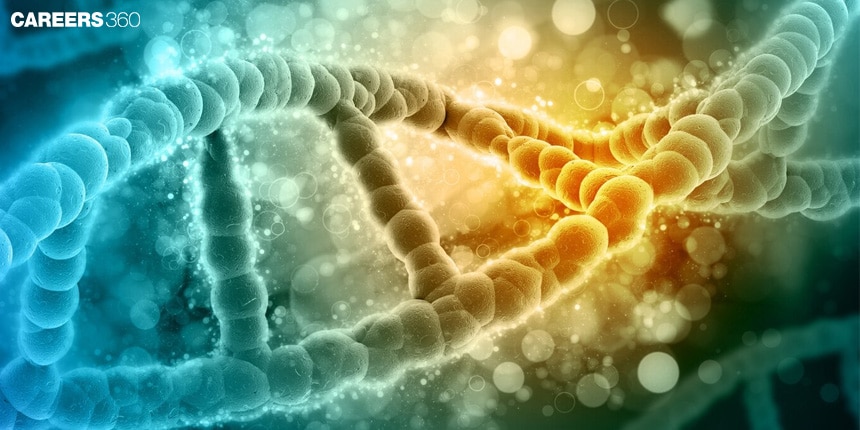Difference Between Spontaneous and Induced Mutation
Spontaneous mutations arise naturally from internal cellular processes, while induced mutations result from external factors like chemicals, radiation, or biological agents. Both types of mutations can be beneficial, neutral, or harmful. Advancements in genome editing technologies, such as CRISPR-Cas9, hold promise for precise manipulation of genetic material, potentially reducing the occurrence of harmful mutations and enhancing beneficial ones.
Don't Miss: Most scoring concepts for NEET | NEET papers with solutions
NEET 2025: Syllabus | PYQs | Crack NEET in 2 months - Study Plan
NEET Important PYQ & Solutions: Physics | Chemistry | Biology | NEET PYQ's (2015-24)
- Mutation
- Spontaneous Mutation
- Induced Mutation
- Difference between Spontaneous and Induced Mutation
- Detection and Analysis of Mutations

Mutation
A mutation is a change in the DNA sequence and affects genetic information carried by that sequence. They can result from errors during DNA replication, exposure to mutagens, or spontaneous chemical changes in DNA. Changes may range from small nucleotide changes to large changes in chromosomes.
Spontaneous Mutation
Spontaneous mutations are those that occur naturally, with no external influence. The former can be the result of random errors in DNA replication or from spontaneous chemical changes of DNA within the cell.
Causes
Replication errors of the DNA.
Natural environmental factors, for example, radiation.
Spontaneous chemical changes of DNA. For example, the deamination of cytosine to uracil.
Examples of spontaneous mutations in nature are point mutations in bacterial populations.
Mechanism
Misincorporation of nucleotides during DNA replication
Tautomeric shifts, leading to mismatches in base pairing
Spontaneous hydrolysis of the glycosidic bond in purine bases, that is depurination.
Deamination of cytosine into uracil or adenine into hypoxanthine
Consequences
Beneficial mutations: Offer advantages, e.g., antibiotic resistance in bacteria.
Neutral mutations: No effect is known on the fitness of an organism, they tend to be in non–coding regions.
Harmful mutation: Genetic disorders or a decrease in the fitness of the organism.
Examples
Lactose tolerance in humans which is beneficial.
Silent mutations in DNA.
Sickle cell anaemia is due to a single nucleotide change in the haemoglobin gene which is harmful.
Also Read:
Induced Mutation
Induced mutations are those occurring as the result of exposure to external factors, called mutagens. It will be a chemical, physical or biological agent that alters the sequence of DNA.
Causes
Chemical mutagens: Benzene, formaldehyde, ethidium bromide
Physical mutagens: UV radiation, X-rays, gamma rays
Biological agents: Certain viruses and bacteria that insert their genetic material into the host genome.
Mechanism
Chemical mutagens: can induce base modifications, insertions, deletions or cross-linking of DNA strands.
Physical mutagens: can induce breaks of the DNA strands or thymine dimers
Biological agents: can introduce their genetic material, interfering with normal gene activity.
Consequences
Beneficial mutations: Used in biotechnology and research, e.g. development of strains of bacteria for the production of certain compounds.
Neutral mutations: These may not have any observable effect on the organism.
Harmful mutations: Can be oncogenic or cause other kinds of genetic diseases.
Examples
Beneficial: Genetic engineering for herbicide resistance of crops.
Neutral: Those are induced but do not have negative effects on the protein function.
Harmful: Induced by radiation and sometimes causing cancer.
Difference between Spontaneous and Induced Mutation
The table below depicts the key differences between Spontaneous and Induced Mutation. Explore additional Differences and Comparisons Articles in Biology to expand your understanding.
Spontaneous Mutations | Induced Mutations | |
Definition | Occur naturally without external influence | Caused by exposure to external mutagens |
Causes | DNA replication errors, natural environmental factors, spontaneous chemical changes | Chemical mutagens, physical mutagens, biological agents |
Examples | Antibiotic resistance in bacteria, lactose tolerance in humans | Herbicide resistance in crops, mutations from UV exposure |
Mechanism | Misincorporation of nucleotides, tautomeric shifts, depurination, deamination | Base modifications, DNA strand breaks, insertion of foreign genetic material |
Effects | Beneficial, neutral, harmful | Beneficial, neutral, harmful |
Detection and Analysis of Mutations
Techniques for identifying Mutations:
DNA sequencing: Determines the exact sequence of nucleotides in a DNA molecule, allowing for the identification of mutations.
PCR (Polymerase Chain Reaction): Amplifies specific DNA regions to detect and analyse mutations.
Gel electrophoresis: Separates DNA fragments based on size, allowing for the detection of mutations such as insertions or deletions.
Also Read:
| Human Genetic Disorder | Molecular Basis of Mutation |
| Chromosomal Mutation | Phenylketonuria |
| Chromosomal Abnormalities | Autosomes and Allosomes |
Recommended Video:
Frequently Asked Questions (FAQs)
Spontaneous mutations occur naturally, independent of any external influence, while induced mutations occur by deliberate exposure to mutagens like chemicals or radiation.
Microbial mutation that occurs automatically because of a particular reason is known as spontaneous mutation.
Examples of induced mutations include genetically modified, herbicide-resistant crops and cancer resulting from exposure to UV radiation.
Mutation effects can be beneficial, conferring advantage in certain environments, or neutral, having no effect, or harmful, leading to sickle cell disease or other disorders, or reducing fitness.
Mutations within a population can be determined by changes in the DNA sequence using techniques such as DNA sequencing, PCR, and gel electrophoresis.
Also Read
03 Dec'24 10:56 AM
30 Nov'24 08:28 PM
27 Nov'24 08:01 PM
26 Nov'24 11:40 PM
23 Nov'24 01:48 PM
21 Nov'24 05:41 PM
19 Nov'24 02:01 PM
19 Nov'24 11:02 AM
19 Nov'24 08:45 AM
18 Nov'24 10:54 PM